Archive for May, 2016
That time Cosmo admitted how horrible the Pill really is
http://www.catholicnewsagency.com/blog/that-time-cosmo-admitted-how-horrible-the-pill-really-is/
On 05.25.16, In Contraception, by Michelle Bauman+
Blood clots. Mood swings. Low sex drive. Migraines.
The list goes on and on.
At this point, it’s not really a surprise that shoving mega-doses of synthetic hormones into our systems year after year comes at a price. But for many women, the Pill still seems like the only option.
For years, it’s felt like Catholics have held the best-kept secret in women’s health – Natural Family Planning. A highly effective method of fertility monitoring without the need to pump your body full of artificial chemicals, it also boasts earlier detection for a whole host of diseases and disorders, and an overall understanding of your own health and fertility. Not to mention Catholic teaching that it’s the only moral method of family planning and allows you to be open to God’s will in a way that contraception does not.
But now, what was once viewed as a weird Catholic thing is becoming more and more mainstream. As people become increasingly conscious of what they are putting into their bodies, they are also realizing what it actually means to manipulate your body’s chemistry to the point that a healthy reproductive system no longer functions.
Even Cosmo has acknowledged that the Pill is pretty awful for women, and that natural fertility awareness methods may offer a better option.
In an article a while back (which was originally published in Elle and later run by Cosmo), the author explores the myriad side effects of the Pill – ranging from inconvenient to potentially deadly – and questions the prevailing mantra that the Pill is the best thing to happen to women since the 19th Amendment.
A few highlights:
To Christiane Northrup, MD, author of Women’s Bodies, Women’s Wisdom, prescribing the Pill for debilitating menstrual conditions, such as the endometriosis I suffered from, only masks the problem. “It’s like a mechanic putting a piece of duct tape over the indicator light on your dashboard and claiming he’s fixed your car,” she says.
The “fertility awareness method,” once the sole province of religions that didn’t allow other forms of contraception, has been newly embraced by holistic women’s health experts such as Northrup, who says it can be at least 95 percent effective when used correctly. She says, however, this requires that “women interact consciously with their fertility, and the reality is that many women still don’t have conscious dominion over their fertility.”
You can find the whole article here. Fair warning: it’s Cosmo. Some of the ads and language on the site are what my editor would refer to as “lusty smut.”
Vatican liturgy chief urges priests to celebrate Mass facing east
http://www.catholicherald.co.uk/news/2016/05/26/vatican-liturgy-chief-urges-priests-to-celebrate-mass-facing-east
by Staff Reporter, posted Thursday, 26 May 2016
Cardinal Robert Sarah made the comments in an exclusive interview with Famille Chrétienne The Vatican’s liturgy chief has called on priests to celebrate Mass facing east.
In an interview [http://www.famillechretienne.fr/vie-chretienne/liturgie/cardinal-sarah-comment-remettre-dieu-au-caeur-de-la-liturgie-194987#.V0bFpURrE2U.twitter] with the French Catholic magazine Famille Chrétienne, Cardinal Robert Sarah said that the Second Vatican Council did not require priests to celebrate Mass facing the people.
This way of celebrating Mass, he said, was “a possibility, but not an obligation”.
Readers and listeners should face each other during the Liturgy of the Word, he said.
“But as soon as we reach the moment when one addresses God – from the Offertory onward – it is essential that the priest and faithful look together towards the east. This corresponds exactly to what the Council Fathers wanted.”
Cardinal Sarah, prefect of the Cardinal Robert Sarah celebrates Mass in Haiti in 2010 (CNS) Congregation for Divine Worship and the Discipline of the Sacraments, rejected the argument that priests celebrating Mass facing east are turning their backs on the faithful “or against them”.
Rather, he said, all are “turned in the same direction: towards the Lord who comes”.
“It is legitimate and complies with the letter and spirit of the Council,” he said. “As prefect of the Congregation for Divine Worship and the Discipline of the Sacraments, I wish to recall that the celebration versus orientem [https://en.wikipedia.org/wiki/Ad_orientem] is authorized by the rubrics, which specify the times when the celebrant must turn to the people. It is therefore not necessary to have special permission to celebrate facing the Lord.”
Cardinal Sarah’s remarks echo an article [http://www.catholicworldreport.com/Item/3947/silent_ action_of_the_heart.aspx] he wrote a year ago for L’Osservatore Romano, in which he said it was “altogether appropriate, during the penitential rite, the singing of the Gloria, the orations and the Eucharistic prayer, that everyone, priest and faithful, turn together toward the East, so as to express their intention to participate in the work of worship and redemption accomplished by Christ.”
The cardinal added in the article that Mass facing east could be “implemented in cathedrals, where the liturgical life must be exemplary”.
Why does the Liturgy matters to One More Soul
By Steve Koob
It is my opinion that for priests to courageously preach and teach Catholic Church doctrine on contraception, they will need great Grace that can only come from the Source and Summit of the Christian Life—the Liturgy.
Furthermore, I think that this infinite source of Grace can only be tapped to a degree commensurate with the holiness of the Mass being offered, and that depends on many factors. Here we address only the orientation of the priest during the Liturgy of the Eucharist.
Father, why do you face the people when offering the Sacrifice to the Lord?”
“That is the way we were trained to say Mass in the seminary. I think it was initiated following Vatican Council II when many other changes were made, like removing the communion rail, and receiving Holy Communion in the hand while standing.” (Common responses)
Why were these changes made to the long tradition of the Church?
“I really don’t know; they were made really quickly.” “The Novus Ordo has completely disoriented Catholics. There needs to be a complete top to bottom re-catechizing on just what the Mass is about—worshipping God.” (Two priests)
Why are all the Advent Masses (2014 & 2015) at the Cathedral of the Risen Christ in Lincoln NE being said Ad Orientem? (Asked of Bishop James Conley)
“I was really introduced to the Novus Ordo, celebrated Ad Orientem (AO), in a monastery in France. That (AO) means towards the altar, towards the east. In this case it was actually toward the geographical east; many places it’s not. But the idea, more importantly, is not the direction of east, but that the priest is standing facing the altar, facing God with the people so that he is standing there at the altar, representing the people and offering the holy sacrifice to God, as was the orientation of the priest for centuries. It was really only after the Second Vatican Council that permission to celebrate the Mass towards the people was allowed. And it’s interesting if you read the document [General Instruction of the Roman Missal], you can tell it wasn’t intended to be the norm. And the council fathers didn’t intend it to be changed that way, it was just allowed. Well, it became the norm, as we know. Very rarely do you find a place that celebrates the holy sacrifice of the Mass Ad Orientem, or towards the altar.” (Bishop James Conley, Diocese of Lincoln Nebraska, Radiomaria.us/ questforlife/ December 09, 2014 – Bishop James Conley on Liturgy, Synods and the Diocese of Lincoln)
Does Ad Orientem refocus the Mass on God and less on the people, and less on the celebrant?
“Well that’s it; I think that’s one of the reasons the orientation is so important not only for the people, but also for the priest himself. It’s less distracting for the priest, because he’s concentrating on the sacrifice and he does not have to keep eye contact with the people. Also for the people it’s sort of a signal to them that now we’re at the altar and in solidarity with the priest celebrant and we’re offering this sacrifice to God. It just seems to be more appropriate for that part of the Mass. And at that point in the Mass it just seems appropriate that we would all be standing together facing the Lord, and the priest representing the people, sacrificing at the altar, they would all be facing the same direction. I can really sense the power of the prayer of the people behind me as I’m offering the consecration for example. And I didn’t really sense that until I celebrated it.” (Bishop James Conley)
What did Cardinal Joseph Ratzinger say about Ad Orientem?
“On the other hand, a common turning to the east during the Eucharistic Prayer remains essential. This is not a case of something accidental, but of what is essential. Looking at the priest has no importance. What matters is looking together at the Lord. It is not now a question of dialogue but of common worship, of setting off toward the One who is to come. What corresponds to the reality of what is happening is not the closed circle but the common movement forward, expressed in a common direction for prayer.” (Joseph Cardinal Ratzinger, The Spirit of the Liturgy, p81, emphasis added)
There is anecdotal evidence that priests who say Mass Ad Orientem (and may have instituted other traditional practices) do proclaim Church teaching on contraceptive use and thus have vibrant parishes with many families and lots of kids.
“We’ll never have a Culture of Life if we don’t get the Liturgy right.”
(Dr Lorna Cvetkovich, MD, 1999) Msgr Ignatio Barreiro put theological flesh and bones on Dr Lorna’s statement with “Sacred Liturgy and the Defense of Human Life”, presented at Sacra Liturgia 2013 in Rome, proceedings published as Sacra Liturgia, 2013, Ignatius Press 2014.
Msgr Barreiro’s paper is reprinted by One More Soul, with permission, and available at https://onemoresoul.com/catalog /sacred-liturgy-and-the-defense-of-human-life-p1233.html .
Toddler spared as he’s airlifted out of hospital that wanted to remove his life support
SACRAMENTO, California, May 25, 2016 (LifeSiteNews) – The parents of a two-year-old California boy on life support have won a crucial interim victory in the fight to keep their son alive, the latest in a lengthy dispute over his condition and care.
Israel Stinson was airlifted to a hospital in an undisclosed location outside the United States on Saturday after weeks of searching for a facility that would provide him treatment in preparation for long-term care, in a case hinging on the contested issue of the legal definition of brain death.
The Sacramento-area Kaiser Permanente facility where Israel Stinson had been since mid-April had declared him brain dead shortly after his arrival, eschewing treatment since then and providing the child only minimal nutrition while acting to remove him from life support.
“Victory!” his Israel’s mother Jonee Fonseca said in a statement Sunday. “Israel Stinson was transferred out of Kaiser Permanente yesterday. He has been taken to another facility and is already receiving treatment.”
“It is remarkable that Israel was given more treatment in the first five hours at the new hospital than in more than five weeks at the Kaiser facility,” Life Legal Defense Fund (LLDF) Executive Director Alexandra Snyder told LifeSiteNews.
Fonseca said because of the sensitivity of her son’s case, the family is not yet prepared to release his location.
“But we can say this, in order for Israel to receive his badly needed care, he had to be transferred out of the United States,” Fonseca stated. “That’s right. After weeks and weeks of searching, no hospital facility in the United States would accept our son.”
The difficulty securing a facility to accept and treat Israel while the family sought long-term care stemmed from Kaiser’s doctors having declared him brain dead, despite the conflicting opinions of specialists retained by the family.
Snyder told LifeSiteNews that doctors at the facility where Israel is now have also said the boy is not brain dead.
“A neurologist and Israel’s pediatric specialist did an extensive examination and determined that Israel is not brain dead,” she said. “This doesn’t mean he is out of the woods, as he does have a severe brain injury. But at least he is being provided treatment and nutrition now.”
Israel’s mother celebrated the fact that her son is now being “treated like a patient” and receiving basic nutrition and care.
“Israel’s medical chart at Kaiser said he was deceased. But Israel is alive!” Fonseca said. “He is right now receiving nutrients and a treatment protocol for the first time in 6 weeks.”
Israel’s story began April 1 when he was brought to the Sacramento Mercy General ER with a severe asthma attack. After he was stabilized, Israel was moved to the pediatric unit at UC Davis Medical Center in Sacramento, where he suffered another attack resulting in cardiac arrest. The toddler was put on a ventilator, and then transferred April 12 to the Kaiser facility for treatment at the family’s request due to concern over the handling of his treatment during the second attack at UC Davis.
Less than 24 hours after his arrival at Kaiser, the hospital performed brain function testing on Israel, without the family’s full knowledge or consent and against their wishes, prompting Fonseca to contact LLDF for help.
The legal battle began with a temporary restraining order enjoining Kaiser from removing life support to allow the family to find an interim facility for Israel, the ultimate goal being long-term care. The family was looking at New Jersey for this since its state law does not allow for a declaration of brain death in cases where the family members believe that life continues until the heart stops beating.
Fonseca and Israel’s father Nate Stinson have maintained throughout that Israel has been responsive to their touch and voices, as well as music, and they have relied openly on their faith to get them through.
LLDF has worked with Pacific Justice Institute as the case has wound its way through the courts to the Ninth Circuit Court of Appeals, where it was again headed this past Monday before Israel’s transfer over the weekend from Kaiser.
While Israel’s situation has stabilized for the time being, his family’s Pacific Justice Institute attorneys say the little boy’s case broaches the issue of the state of California’s law regarding a determination of brain death.
“While an important goal of this case has been achieved, it has also raised serious questions about the constitutionality of the California Uniform Determination of Death Act,” Matt McReynolds stated in a report by The Sacramento Bee. “It has become clear that declarations of brain death do not always reflect medical consensus and do not comport with basic notions of due process. These legal claims have not been mooted, and we will be evaluating how best to pursue these important constitutional questions.”
Fonseca’s suit against Kaiser to prevent the facility from removing Israel from life support contended that the hospital’s declaration of brain death violated her constitutional rights of due process to determine her son’s care.
Pacific Justice Institute lead attorney Kevin Snider said the crisis in Israel’s case was over, but a reason and opportunity to challenge the law remains, and it will be up to Israel’s parents if they want to go forward with that.
After Israel’s transfer Saturday to a new hospital Fonseca thanked supporters on the family’s GoFundMe page, set up last month to help fund the toddler’s transfer to another facility. Donations on the page have reached $20,000, and Fonseca said that because of the support, “Israel was able to beat the odds and is now being cared for as a live human being.”
The prayers of supporters have “made all the difference,” Fonseca continued, giving her son the chance to recover. But with the quest to finally get him home still ongoing, she asked supporters to remain engaged in his case.
“We have a long road ahead,” Fonseca stated. “Our story is not yet over.”
Viral video is turning a third of “pro-choice” women against abortion
http://liveaction.org/press/viral-video-turning-third-pro-choice-women-abortion/
ARLINGTON, VA (May 24, 2016) — A new four-minute viral video is causing over a third — 34 percent — of “pro-choice” women surveyed to view abortion “less favorably.” And 28 percent of pro-choice women who watched the video stated there should be more restrictions on abortion.
The women watched the D&E Abortion Procedures video, part of Live Action’s new “Abortion Procedures” video series, which features an OB/GYN and former abortionist using medically accurate animations to give viewers a window into the womb during an abortion and show how developed a baby is during the procedure. The videos were produced in conjunction with a team of OB/GYNs, former abortionists, and other physicians, and have been viewed over 42 million times to become the most-watched pro-life videos in history.
Live Action conducted an online video survey of 502 women ages 18-30 through independent polling company Survey Monkey, then analyzed the responses of a subgroup of 208 women who self-identified as “pro-choice” and watched the video. The results are below.
In addition to the survey, Live Action conducted a series of man-on-the-street interviews in Los Angeles, showing abortion supporters rejecting abortion after viewing the “Abortion Procedures” videos. The man-on-the-street video is here.
“Abortionists have worked for decades to keep women in the dark about how developed their preborn children in the womb are and what abortion procedures actually entail for both the mother and the child,” said Lila Rose, president and founder of Live Action. “The more people learn about abortion, the more they see how barbaric and inhumane it is — whether the abortion is committed by depriving a preborn child of nutrients for days until she dies, or by ripping her limbs apart while she’s still alive, or by injecting her with a drug to induce cardiac arrest.”
Almost half of the pro-choice women polled — 46 percent — felt that the medical animations should be shown to high school sex education classes, and 39 percent felt that pregnant women considering abortion should watch them.
“Pro-choice women told us that young people and women considering abortion should have access to these facts about abortion, not just to the pro-abortion spin that seems to dominate media, entertainment, and politics today. The Internet allows us to spread the truth about abortion faster and farther than ever before, and the fact that these videos have already been viewed over 42 million times to become the most-watched pro-life videos in history proves it,” said Rose.
The Survey
Live Action conducted an online video survey during the weeks of May 9th and 16th that asked 502 women ages 18-30 to watch its D&E Abortion Procedures video and respond to a series of questions. The women were randomly chosen by independent online polling firm Survey Monkey from its universe of women 18-30 who self-identified their political leanings as moderately liberal, slightly liberal, slightly conservative, or neither liberal nor conservative. Of those women who self-identified as “pro-choice,” 208 watched all or most of the video. After watching the video, the 208 pro-choice women were asked:
Q. Did the video change the way you view abortion?
9.1% I view abortion much less favorably
25.0% I view abortion somewhat less favorably
62.0% I view abortion the same as I had previously
1.4% I view abortion somewhat more favorably
2.4% I view abortion much more favorably
Q. Under federal law, abortion is legal up until birth for any reason. Some states have further restrictions. After watching the video, do you think there should be more or fewer restrictions on abortion?
28.4% More restrictions
29.3% Fewer restrictions
42.3% Leave the current restrictions as-is
Q. Who do you think should see this video? (Total >100% because respondents could check as many as they wanted.)
46.6% High school sex education classes
42.8% College students
39.4% Pregnant women considering abortion
38.9% General public
26.0% Elected officials
34.1% None of the above
Vatican cardinal rebukes ‘demonic’ attacks on family at Washington breakfast
WASHINGTON, D.C., May 17, 2016 (LifeSiteNews) – Cardinal Robert Sarah slammed gender ideology, same-sex “marriage,” and transgender bathroom policies at the National Catholic Prayer Breakfast on Tuesday, describing them all as demonic attacks on humanity.
Sarah, the prefect for the Congregation of Divine Worship and the Sacraments, was the keynote speaker at the annual prayer breakfast, where he joined Speaker of the House Paul Ryan and Sister Constance Veit, the director of communications for the Little Sisters of the Poor. Numerous Catholic bishops and members of Congress, including Apostolic Nuncio Archbishop Carlo Maria Vigano, were in attendance.
“The battle to preserve the roots of mankind is perhaps the greatest challenge our world has faced since its origins,” Sarah told the crowd of nearly a thousand people. Catholics should follow the “courageous” example of St. John the Baptist, a martyr for the sanctity of marriage, Sarah said.
“Do not be afraid to proclaim the truth with love, especially about marriage according to God’s plans,” said Sarah. “In the words of St. Catherine of Siena, ‘proclaim the truth and do not be silent through fear.’”
Sarah blasted gender ideology as “ideological colonization” and lamented the “insidious” dismantling of religious freedom in the United States.
“Every human being, like the person of the Trinity, has the capacity to be united with other persons in communion through the…bone of charity of the Holy Spirit,” said Sarah. “The family is natural preparation and anticipation of the communion that is possible when we are united with God…this is why the devil is so intent on destroying the family. If the family is destroyed, we lose our God-given anthropological foundations and so find it more difficult to welcome the saving good news of Jesus Christ: self-giving, fruitful love.”
He continued:
The rupture of the foundational relationships of someone’s life—through separation, divorce, or distorted impositions of the family, such as cohabitation or same sex unions—is a deep wound that closes the heart to self-giving love [unto] death, and even leads to cynicism and despair.
These situations cause damage to the little children through inflicting upon them a deep existential doubt about love. They are a scandal—a stumbling block—that prevent the most vulnerable from believing in such love, and a crushing burden that can prevent them from opening to the healing power of the Gospel.
Advanced societies, including, I regret, this nation, have done and continue to do everything possible to legalize such situations. But this can never be a truthful solution. It is like putting bandages on the infected wound. It will continue to poison the body until antibiotics are taken.
Sadly, the advent of artificial reproductive technologies, surrogacy, so-called homosexual ‘marriage,’ and other evils of gender ideology, will inflict even more wounds in the midst of generations we live with.
This is why it is so important to fight to protect the family, the first cell of the life of the Church and every society. It is not about abstract ideas. It is not an ideological war between competing ideas. This is about defending ourselves, children, and future generations from a demonic ideology that says children do not need mothers and fathers. It denies human nature and wants to cut off entire generations from God.
Sarah warned that “today we are witnessing the next stage and the consummation of the efforts to build a utopian paradise on earth without God,” a “turmoil” about which Pope St. John XXIII alerted the Church when he announced the Second Vatican Council in the Apostolic Constitution Humanae Salutis.
This effort is in the “stage of denying sin and the fall altogether,” according to Sarah, and its fruits are the suppression of goodness, beauty, truth, and love.
“Good becomes evil, beauty is ugly, love becomes the satisfaction of sexual primal instincts, and truths are all relative,” said Sarah.
“All manner of immorality is not only accepted and tolerated today in advanced societies, but even promoted as a social good,” he continued. “The result is hostility to Christians, and, increasingly, religious persecution. Nowhere is [this] clearer than in the threat that societies are visiting on the family through a demonic ‘gender ideology,’ a deadly impulse that is being experienced in a world increasingly cut off from God through ideological colonialism.”
“I encourage you to truly make use of the freedom willed by your founding fathers, lest you lose it,” the African cardinal advised the faithful. He cited international religious persecution against Christians and “political, ideological, and cultural” persecution that damages the Christian faith and leads souls astray.
“Do we not see signs of this insidious war in this great nation of the United States?” Sarah asked. “In the name of ‘tolerance,’ the Church’s teachings on marriage, sexuality, and the human person are dismantled. The legalization of same-sex marriage, the obligation to accept contraception within healthcare programs, and even ‘bathroom bills’ that allow men to use the women’s restroom and locker rooms. Should not a biological man use the men’s restroom? How simpler can that concept be?”
Sarah offered the faithful three suggestions: be prophetic, be faithful, and pray.
“I am confident that your efforts will no doubt contribute to protecting human life, strengthening the family, and safeguarding religious freedom not only here in these United States, but everywhere in the world,” he finished. “For in the end it is ‘God or nothing.’”
Paul Ryan: ‘Religious liberty is going to make a comeback’
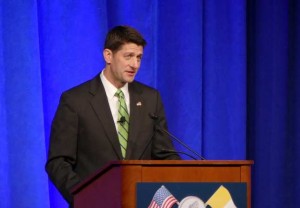
In his address, House Speaker Paul Ryan told attendees, “We have an obligation to advocate for our faith.”
Although religious liberty in America is under assault, he said, “I actually think that religious liberty is going to make a comeback because there is a growing need for faith across this nation.”
Quoting St. Thomas Aquinas, the former vice presidential nominee said that no matter one’s circumstances, the ultimate purpose of human life is contemplation of God.
Ryan noted that during his many meetings with individuals struggling with drug addiction, he noticed they often seem to “feel a deep, gnawing pain inside,” a lot of which “stems from loneliness.”
“We all feel loneliness at some level,” said Ryan. “We all feel that distance from God” and it is turning to God that consoles and heals us, he said.
And “when faith itself is ruled out of bounds, then happiness itself is being placed out of reach.”
“There is a spiritual void that needs to be filled,” continued Ryan. “Perhaps poverty is God’s way of leading us to contemplate something higher. The fight against poverty and the need for religious liberty go hand-in-hand.”
It’s not just enough to raise people’s wages and give them jobs, Ryan said. The spiritual void must be filled.
“When you meet people who have beaten addiction,” he continued, “most of them say something like this, ‘it wasn’t me. It was God’. … Every good work is the work of God. It is his grace working inside of us” and realizing that causes a loss of pride and a loss of any sense of despair.”
“There is nothing more life-changing than coming to know the Lord,” said Ryan.
Little Sisters of the Poor: We don’t have a ‘contingency plan,’ we trust in God
Sister Constance encouraged Catholics to be joyful and to view persecutors and adversaries as Christ would.
“Hate crucified love incarnate,” Sister Constance told the packed room. “The forces of death killed the Lord of life. So let us not be Christians who communicate Lent without Easter, but believers who know how to speak the truth in joy and love.”
“Even our most cunning adversary is a person longing to love and be loved,” she said.
Sister Constance said that the Little Sisters of the Poor trust in God regardless of the outcome of their ongoing legal case against the Obama administration, which has been attempting to force them to violate their consciences by cooperating with actions that the Catholic Church considers intrinsically evil. On Monday, the Supreme Court chose not to rule on the case and punted the case to the U.S. Courts of Appeals. Pro-life groups declared this an initial victory.
“We have no contingency plan, because like [our foundress], we believe that God will never abandon us,” said Sister Constance. “I don’t say this because it’s a clever sound bite, but because I have deliberately chosen to believe it.”
Not a Pretty Sight: Obama’s (Latest) Gift to Planned Parenthood
http://www.humanlifereview.com/not-pretty-sight-obamas-latest-gift-planned-parenthood/
On March 30 Planned Parenthood got a big gift from the Obama Administration.
That’s the day the FDA rewrote the label on chemical abortion drugs. Now, the FDA regulations conform to what had long been the common off-label use of the drugs by chemical-abortion providers.
If that sounds like the tail wagging the dog, well, it is. The abortion industry is now setting standards for medical practice.
And if, as the year wears on, Planned Parenthood et al become concerned that a pro-life candidate might be headed toward the White House, they will no doubt get their government friends to make more executive-level changes that favor the abortion business.
But first, the March 30 action: Remember RU-486, the abortion-causing pill from France? The pro-life movement fought to keep it out of the United States, but in 2000 the FDA approved its use in a fairly strict regimen that included taking a second drug, misoprostol.
Today RU-486 is known as mifepristone—brand name Mifeprex. Mifepristone is a drug that blocks progesterone, a hormone necessary to sustain pregnancy. Taken in conjunction with misoprostol, which causes contractions to the uterus, it results in miscarriage.
The latest FDA action alters the chemical-abortion regimen the agency established back in 2000 in significant ways:
•It is now considered to be effective through 10 weeks of pregnancy, up from 7 weeks in 2000;
•The dosage of mifepristone, which was 600 milligrams in 2000, has been reduced to 200 milligrams;
•Women can now receive misoprostol—which is to be taken 24 to 48 hours after taking mifepristone—at their first doctor visit;
•In 2000, a woman had to be examined by a doctor 14 days after taking mifepristone. Today, no post-abortion examination is required, only an “assessment” between 7 and 14 days afterwards, just to make sure the “pregnancy has passed from the uterus.”
Why the changes? What do you think?
They can couch it in rhetoric about “current available scientific evidence and best practices” all they want, but the bottom line is: More customers for Planned Parenthood, which now gets an additional three weeks to enable a woman to kill her baby in her own home—with only one medical exam and one post-abortion “assessment” (a phone call?) required. Much easier, and cheaper (for Planned Parenthood at least) this way.
“Medication-induced abortions,” reported the New York Times on March 30,
made up as much of a quarter of all abortions in 2011 according to the most recent figures from the Guttmacher Institute, which tracks women’s reproductive health issues. Planned Parenthood said as many as half of eligible women in its clinics requested medication-induced abortions.
It’s the medically approved do-it-yourself abortion—for the independent woman. Its very convenience is part of its cruelty.
It allows a woman who is already going through the torment of an unwanted pregnancy to go through the agony of an abortion all by herself. With no need for someone to accompany her when she has an appointment with a chemical-abortion provider, she has no pretext to reach out to another human being as she destroys the life within her. And therefore little opportunity to hear the concern and support that others would be willing and eager to give her.
According to the FDA, between 2000 and the end of 2011 the number of women who had chemical abortions using mifepristone and misoprostol was 1.52 million.
What has their experience been like?
Miserable.
From the FDA’s own flyer “Questions and Answers on Mifeprex”:
Cramping and vaginal bleeding are expected effects of the treatment regimen. In some cases very heavy vaginal bleeding will need to be stopped by a surgical procedure . . .
Other common side effects of the treatment regimen include nausea, weakness, fever/chills, vomiting, headache, diarrhea, and dizziness . . .
The FDA has received reports of serious adverse events in women who took Mifeprex and followed the regimen.
From the FDA’s Medication Guide:
Be sure to contact your healthcare provider right away if you bleed enough to soak through two thick full-size sanitary pads per hour for two consecutive hours or if you are concerned about heavy bleeding. In about 1 out of 100 women, bleeding can be so heavy that it requires a surgical procedure (surgical aspiration or D&C).
(One out of a hundred for 1.52 million = 15,200 more procedures. More business for a full-service Planned Parenthood clinic. Perhaps the anticipation of more of this kind of business could help explain why PP is shifting its business model to mega centers?)
If you have abdominal pain or discomfort, or you are “feeling sick,” including weakness, nausea, vomiting, or diarrhea, with or without fever, more than 24 hours after taking misoprostol, you should contact your healthcare provider without delay. These symptoms may be a sign of a serious infection or another problem (including an ectopic pregnancy, a pregnancy outside the womb).
In the days after treatment, if you have a fever of 100.4F or higher that lasts for more than 4 hours, you should contact your healthcare provider right away. Fever may be a symptom of a serious infection or another problem.
If you are still pregnant [after Mifeprex with misoprostol treatment], your healthcare provider will talk with you about a surgical procedure to end your pregnancy. … The chance of birth defects if the pregnancy is not ended is unknown.
Mifepristone does not end a pregnancy outside the uterus, that is, an ectopic pregnancy. Unless there’s an ultrasound requirement to confirm pregnancy in the uterus, how would a woman know that she continues to be pregnant after going through all that? Yet the “reproductive freedom” lobby resists initiatives to require confirmation of pregnancy by ultrasound in the states where such measures are introduced.
What happens to women who will obtain the drugs on the internet and not bother to see a doctor? What happens to the girl who has von Willebrand’s Syndrome or another blood disorder but doesn’t know it . . . until she is bleeding to death in the privacy of her own home?
The FDA’s own adverse effects report, covering September 2000 until April 30, 2011, provides some unhappy answers: 2,207 cases of women suffering adverse events; 612 hospitalized; 14 deaths; 339 transfusions required; 256 infections; 58 ectopic pregnancies.
And those statistics are based only on cases in which a woman told someone she had taken the abortion drugs and that person reported it to medical authorities.
Not a pretty sight, the way modern reproductive medicine treats its victims.
Mum who rejected abortion displays quintuplet babies
https://www.spuc.org.uk/news/news-stories/2016/may/mum-who-rejected-abortion-displays-quintuplet-babies
An Australian mother who gave birth to quintuplets in January has released a photo shoot of her five new babies.
It took Kim Tucci, 26, just two minutes to give birth to the massive set of new arrivals – four daughters and one son – who were conceived naturally.
Doctors had advised Kim to abort some of her five unborn children on health grounds but she refused, going on to give birth to all five babies.
Surprised by Five
Kim and her husband Vaughn, who live in Perth, already have a nine-year-old daughter and two sons aged two and four. Now their family has expanded with the arrival of Tiffany, Keith, Penelope, Beatrix and Allie!
The odds of conceiving quintuplets naturally is approximately one in 55 million. Kim documented the story of her pregnancy on her blog, Surprised by Five.
She also described how doctors had recommended that she undergo a ‘selective abortion’ – i.e. abort up to three of her unborn children in order to give the others a better chance of survival.
Refusing selective abortion
On 26 September, 2015, Kim wrote:
“After my initial ultrasound I was told I could consider the selection method [abortion] to give 2 babies the best chance in life … I watched a YouTube video on the procedure and I cried, I could never do that! Was I selfish for not giving two the chance of 100% survival?? All I knew is that I already love them and that every heart beat I heard I connect with them more.”
A team of 50 doctors and nurses assisted with the planned caesarean birth and all of the children were born healthy after spending 29 weeks in the womb.
Not always easy
Kim’s pregnancy with her quintuplets was often far from easy. She blogged about pain, extreme discomfort, sleepless nights, constant trips to the bathroom and a 6,000-calorie a day diet to sustain her five unborn babies.
But the mum-of-eight also said that all the aches and pains, the stretch marks and hospital stays were worth it, knowing that her babies are healthy. She also thanked her husband for his constant support through her pregnancy struggles.
Support
“My husband always reminds me I should wear my stripes with pride and that I should be proud of them and what my body has achieved. Without him I would have broken down a long time ago,” Kim wrote.
Now that the babies have come home, friends and family are organizing a fundraiser to help the Tuccis buy a car big enough to transport their entire family.
Photoshoot
Kim recently posted on her blog:
“50 fingers 50 toes, 6 hearts beating at once. My body fought the toughest of battles to get five babies here safely. Everything I did I did for them.”
Local business Erin Elizabeth Photography, which helped document Mrs Tucci’s pregnancy, organised a photoshoot for the quintuplets and their proud mum, which has since gone viral. You can see the rest of the pictures below:
How Children Bless their Parents
By Vince Sacksteder III, One More Soul, April 15, 2016
Children are treasures.
Jason Adams, a One More Soul author and a friend of mine, once wrote: “Once I worried about what I would have to give up in having children; now I know there is nothing that I would not give up for my children. They are infinitely more valuable to me than anything I own.” My own experience confirms this. My children have proven to be more valuable than everything else I have. Children help us value the future.
Every child helps us look to the future.
Once we have a child, we start being concerned about how that child will be doing 5, 10, 20 years from now. We start making plans for the future, and we take steps to fulfill those plans. Children strengthen our hope for a great future.
Children open our hearts.
If we never concerned ourselves with mercy and compassion, or with trust and fidelity, suddenly these virtues become very important to us. Seeing our children grow up opens to us vistas of who we can be, vistas that were hidden before.
Children toughen us.
Maybe I was a whiner; maybe I couldn’t bear setbacks or obstacles; maybe I felt that life was too much for me. Now, with children, I have a motivation to just get over those things and press on with life. I have become a more solid citizen and more valuable to myself and to those around me.
Children show us new things.
Children have new eyes and new approaches to life. One of my daughters is an artist and is constantly finding new ways to make our home beautiful. One is a great organizer and frequently helps put family events together, to say nothing of organizing events of her own. Each has strengths that we as parents did not have and each contributes something fresh to the family.
Children help us treasure the present moment.
Little children live in the present and mirror to us just how valuable the present is. For them the thing they are doing right now is the most important thing in the world. What a lesson for us all.
Children become adults.
One of the most wonderful things about children is that they grow, and grow and grow. They become as large as we are and often larger and stronger, physically and spiritually as well. We learn to lean on them for many things we never could do, or can no longer do.
Children make wonderful friends.
A friend is glad to see us no matter what, and always glad to do something for us, if at all possible. Children are like that; they love us and are not afraid to show it.
Children teach us discipline.
When it comes to holding our temper, doing a task we really don’t want to do, or stretching ourselves a bit more than we would be inclined to, children excel, especially small children. New babies, particularly the first baby, make parents many times more patient, more loving, and more accommodating than they ever were before.
Children reflect God to us.
God’s presence shines from the eyes of newborns and radiates from the simplicity of small children. God is shared with us by the wisdom that comes to us from grown-up children, and also the wisdom that we share with them, wisdom that we didn’t know we had. God’s presence grows in the love that is shared between us and our children.
Why Are We Afraid to Tell the Truth?
by Fr. Shenan J. Boquet
I received a number of emails from friends after Respect Life Sunday saying that they heard little, if anything, about life and family from the pulpit. It is as if some pastors are afraid of preaching the Gospel of Life, or have something more important to talk about even when it is chosen as the day to preach on precisely these issues.
The failure to preach the Gospel of Life is not only a U.S. problem. During HLI’s conferences, I hear the same comments from around the world. I bring this up when I speak to seminarians, priests, and bishops – many times the only message the faithful will hear about these incredibly urgent pastoral and moral questions is at Mass.
Generally, Catholics might hear a homily on abortion once a year. They might hear an occasional reference to euthanasia – a subject some deem easier to preach about – but most usually never hear references to contraception, homosexuality, promiscuity, pornography, cohabitation or divorce.
It is also not helpful when Church leaders accept the false caricature that “the Church is always talking about these issues,” so it’s about time we talked about something else. Apparently “the Church” has not sufficiently talked about issues in a way that helps the political party that now treats abortion as a “human right.”
When one cardinal said two years ago that those Catholics who were in second civil unions without annulment of their marriages should not be expected to be heroes by being celibate, many couples who had been abstaining from sex felt like they had been punched in the gut. What had they been sacrificing for? Such a position makes it sound like Jesus’ teaching on marriage is just too hard to follow. We know better than Jesus. We are more pastoral. It is even more hurtful when the cardinal’s superior also seems to accept and repeat this characterization of Church teaching as being uncompassionate.
It is true that priests and bishops are people too. When they preach in a way that displeases people not only might they lose parishioners, they may also lose collection revenue and invite nasty e-mails and face-to-face conversations after Mass. Most of us know the risks too well.
But, my brothers, we have given our lives to a Man who submitted to a gruesome and humiliating death! We follow Our Lord, who died on a cross for us! If we love those whom we are given to serve in our parishes – let me choose my words carefully here – how the hell are we helping them if we do not tell them the truth – the Good News – about sexuality and marriage? These are pastoral issues, and cannot be reduced to some obscure teaching that was meant for another time! Pope Saint John Paul II knew this well:
The Gospel of life is at the heart of Jesus’ message. Lovingly received day after day by the Church, it is to be preached with dauntless fidelity as “good news” to the people of every age and culture. (Evangelium vitae 1)
My God, my God, why have we forsaken you? How did we let ourselves come to the belief that you, Our Lord, meant for our lives to be as easy as possible? That Your Law — what You told us is what those who love you will follow — can only be held up when it happens to find agreement with our fallen culture?
Why are we not protecting married couples from the violence of contraception — the divorce of unitive and procreative aspects of the beautiful gift of sexuality? Why are we afraid of helping our brothers and sisters to live in truth, according to their dignity?
What is our role and duty in Christ – in truth and charity?
No one has said that we must only preach about life and family issues. Anyone who claims differently is ignorant or is trying to manipulate the listener. As priests we must prayerfully discern how to bring the Word of God directly to those we serve in a way that they can hear. We absolutely must remind the faithful of their obligation to serve in solidarity with those in need, to be generous with their material gifts. We owe it to our congregations to remind them of the goodness of Truth and Beauty – the goodness of life, of God’s creation and our responsibility to be stewards of what we’ve been given. We have to remind people that our faith cannot be reduced to rules, but is based on Love.
But we must never accept the false representation of Church teaching on life and marriage as lacking compassion, or pretend it was made for another time. We must not be afraid to tell the truth about life and family, as there are no more immediate or urgent pastoral issues that our families are dealing with at home or in the public square.
Preaching on these issues on Respect Life Sunday is a bare minimum – a starting point. We are forming hearts and minds so that the faithful can in freedom choose wisely and lovingly when the moment of heroism – even everyday heroism for those with great challenges – comes their way. It is not “pastoral” to ignore the loving doctrine we have been given and offer solutions that soothe and confuse. This is not love.
Scientists say life begins at conception with a flash of light
May 3, 2016 (LiveActionNews) — Abortion advocates often claim as a defense of abortion that no one can really, truly define the moment life begins. Without knowing that, they say, there’s no real argument against abortion. Consider, for example, Melissa Harris-Perry’s insistence that life begins “whenever you feel like it does.” Obama famously said that the question of when life begins was above his pay grade. While the science of embryology has long been settled, it’s still not good enough for abortion activists.
But a new scientific breakthrough might go a long way towards changing hearts and minds: scientists have been able to capture the moment life begins, with a bright flash of light as a new life is conceived…
Human life begins in bright flash of light as a sperm meets an egg, scientists have shown for the first time, after capturing the astonishing ‘fireworks’ on film.
An explosion of tiny sparks erupts from the egg at the exact moment of conception.
Scientists had seen the phenomenon occur in…animals but it is the first time is has been also shown to happen in humans.
The photos included were not of actual embryos being created — the scientists used a sperm enzyme to replicate the incredible moment that life begins.
Unfortunately, rather than using this discovery to defend life, scientists are using it to better discern which lives to destroy.
Researchers from Northwestern University, in Chicago, noticed that some of the eggs burn brighter than others, showing that they are more likely to produce a healthy baby.
… “This means if you can look at the zinc spark at the time of fertilization, you will know immediately which eggs are the good ones to transfer in in vitro fertilization.
“It’s a way of sorting egg quality in a way we’ve never been able to assess before. “All of biology starts at the time of fertilization, yet we know next to nothing about the events that occur in the human.”
So basically, the scientists are advocating for embryos to be created in order to facilitate IVF, and then destroyed if they don’t seem to be the healthiest, strongest embryos. The ones with a dimmer glow are deemed to be weaker, perhaps because of a genetic abnormality, and so after creating their unique lives, scientists plan to destroy them. This is even though science has also just confirmed that babies with abnormalities can self-correct while still in the womb. People who are undergoing IVF are often encouraged to destroy “defective” embryos, ending the lives that were just created, without giving the embryos any chance at all to grow and develop, and certainly without placing any value on the uniqueness of each human life.
As Secular Pro-Life pointed out:
[T]he article is refreshingly clear about conception being the point where life begins. There is no obfuscation. The very first line of the article is “Human life begins in bright flash of light as a sperm meets an egg, scientists have shown for the first time, after capturing the astonishing ‘fireworks’ on film.”
Which is why the rest of the article is so incredibly disturbing.
Agreed. It’s sad that such a life-affirming discovery is being used to further the culture of death.
Reprinted with permission from Live Action News.
U.S. suicides are increasing at alarming rates: assisted suicide advocacy is at least partly to blame
April 26, 2016 (NationalReview) — There has been a huge and alarming increase in the U.S. suicide rate. From the CDC announcement:
From 1999 through 2014, the age-adjusted suicide rate in the United States increased 24%, from 10.5 to 13.0 per 100,000 population, with the pace of increase greater after 2006…
Suicide is increasing against the backdrop of generally declining mortality, and is currently one of the 10 leading causes of death overall and within each age group 10–64…
This report highlights increases in suicide mortality from 1999 through 2014 and shows that while the rate increased almost steadily over the period, the average annual percent increase was greater for the second half of this period (2006–2014) than for the first half (1999–2006).
Color me decidedly not surprised. We are becoming a pro-suicide culture.
I believe the assisted suicide movement bears partial responsibility. Suicides have increased at the very time the assisted suicide movement has been vigorously and prominently promoting self-killing as a proper means to alleviate suffering.
Moreover, assisted suicide is often portrayed sympathetically in popular entertainment and the media is completely on board the assisted suicide bandwagon. Don’t tell me that doesn’t give despairing people lethal ideas.
At the same time, suicide prevention campaigns usually ignore this toxic elephant in the room.
It is also noteworthy that the suicide rate increased faster after 2006–the very time when the assisted suicide movement has become the most vigorous and made its most dramatic advances.
There is no question that assisted suicide advocacy is not the only factor causing this alarming increase in suicides. But I am convinced that the correlation could also be at least a partial causation.
Look at it this way: If we say that suicide is okay in some circumstances–but not others–at best we are sending a mixed message, making it more difficult for the anti-suicide message to sink in.
In this regard it is like telling someone, “Don’t smoke, but if you do, use filter cigarettes.”
One study has already found a weak linkage. I would like to see a more concerted investigations that aren’t afraid of making a controversial connection.
Reprinted with permission from National Review.
Judge Gives Family Two Weeks Before This Boy’s Life Support is Yanked Without Their Consent
The name Israel means he who prevails with God. Right now, there is an emergency calling for the performance of God’s love and work here on earth. In no uncertain terms, prevailing in this instance means life and losing results in death.
Israel Stinson is a beautiful two-year-old boy with baby soft caramel skin and big brown sparkling eyes, the kind that penetrate through your chest and make you feel as if part of your heart is smiling. Israel’s mom uses her graceful fingers to comb Israel’s dark curls into a pile on the top of his head that gently rests on a white pillow case at the Kaiser Permanente Medical Center in Roseville, California—the hospital determined to end Israel Stinson’s young life.
On Monday, May 2nd at 1:30pm, the parents of two-year-old Israel Stinson took the next steps in their battle against the hospital, currently housing their son, from carrying out its decision to end Israel’s life. Israel’s parents, with the help of their heroic attorneys from the Life Legal Defense Foundation, asked Judge Kimberly Mueller to restrain the hospital from unplugging Israel’s ventilator. A move, that the hospital knows, will kill two-year-old Israel by suffocation. The court gave Israel until May 11th.
Just one month ago on April 1st, Israel’s parents could not have imagined this fate. It was the week after Easter Sunday. Israel was running around like a normal, active two-year old. Israel was enjoying his role of responsible and loving older brother to his younger sister. Israel was laughing, sharing his contagious grin, and beaming with life and innocence. But then the protective shield a mother builds around her child was pierced as Israel’s mom found herself rushing into an emergency room. Israel was having trouble breathing; he suffered an asthma attack.
The physicians in the emergency room placed Israel on a breathing machine and took x-rays. Eventually, the physicians intubated Israel and transferred him to a different hospital with a pediatric unit. There, on the very next day, Israel’s tube was removed. The hospital declared Israel was stable and told Israel’s parents that they could probably go home the following day. This never happened.
About an hour and a half later, the relief of this news drained from the room as Israel began wheezing and gasping to breathe again. Instead of providing a breathing tube, physicians attempted other methods that proved unsuccessful. Israel’s body went limp, and the hospital eventually performed CPR to resuscitate Israel’s tiny body. Doctors placed Israel on life support but encouraged Israel’s parents that he was “going to make it.” Later, doctors shared that a possibility of brain damage existed due the lack of oxygen to Israel’s brain prior to connecting Israel to life support.
Three days later, on April 6th, doctors determined that Israel’s heart and lungs were functioning on their own. Then six days after that, doctors transferred Israel to yet another hospital, the Kaiser Permanente Medical Center. It is here, within 24 hours of receiving Israel, that the hospital told Israel’s parents that they would likely withdraw life support. Indeed, just two days after being transferred to Kaiser Permanente Medical Center, the hospital pronounced two-year Israel “brain dead.”
To the hospital, this pronouncement means that Israel’s parents no longer have the right to exercise any decision making authority regarding Israel’s placement on a ventilator. Simply put, the hospital can unplug the machine that is keeping Israel alive. Israel’s parents filed a petition with the state court, begging the court to order the hospital to continue treatment and give their son more time. The state court temporarily restrained the hospital from removing the ventilator for the family to make arrangements for their son to be transferred to another hospital.
Dr. Paul Byrne, a board certified neonatologist, pediatrician, and Clinical Professor, visited Israel and examined his medical records. Dr. Paul Byrne wants everyone to know: “Israel is alive.”
Dr. Paul Byrne is an expert in traumatic brain injury, like Israel’s. In 1975, Dr. Paul Byrne treated a young man that some physicians concluded was brain dead and was on a ventilator for 6 weeks. The young man eventually gained full consciousness and was weaned from the ventilator. The man went on to live a full life, is married, and has three children. Dr. Paul Byrne also treated Jahi McMath, whose parents also had to take hospital administrators to court in order to save the life of their child. Since being declared “brain dead,” Jahi has celebrated her 14th and 15th birthdays, and is constantly surrounded by the love of her family.
Dr. Paul Byrne discovered that the hospital was failing to give Israel the nutrients and treatments he needed to recover. The hospital refused to change their treatment at the request of Israel’s parents claiming that “they do not treat or feed brain dead patients” and that Israel’s parents no longer have the ability to make decisions over their son’s healthcare.
In the past week, Israel has shown improvement. Israel’s heart continues to beat on its own. Israel responds to his mother’s voice, took breaths on his own, and even lifted his arm. The hospital, however, refuses to back down and is fighting to remove Israel’s life support.
Israel’s family and legal counsel find themselves in a race against time. Unable to secure placement in a different facility before the expiration of the state court’s temporary restraining order, the family filed an emergency motion with the federal court last Friday to stop the hospital from ending Israel’s life and to obtain more time. Yesterday, the federal court restrained the hospital from removing life support until May 11th, giving Israel’s family a brief reprieve. The family hopes that May 11th does not come too soon.
Israel currently needs a hospital willing to accept him and a doctor who is board certified in California to perform a tracheotomy and insert a feeding tube for Israel to breathe and receive nutrients while in transport to a new hospital. Perhaps someone in a position to help might read this article and rise to the challenge of helping Israel.
Critics may say recovery is impossible. That Israel’s parents should just give up. But why should Israel’s parents be forced into blind obeisance to a hospital, especially when there are conflicting opinions about their son’s condition? And, above all, when doing so will result in the death of their beautiful, two-year old son? Both Israel’s legal challenges against the hospital and his physical recovery pose significant, seemingly insurmountable, battles. But maybe there are times in life when love and the will to live can decimate the impossible to nothing. And maybe the truly wise know that nothing—absolutely nothing—is impossible for God.
LifeNews Note: Erin Mersino is a pro-life attorney who has worked for the More Law Center and has been published by National Right to Life News, USA Today, Politico Magazine, American Thinker and others.
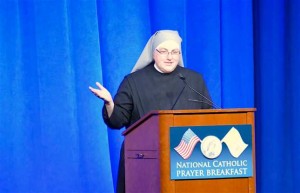


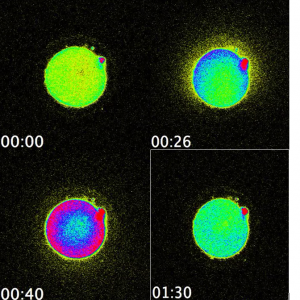
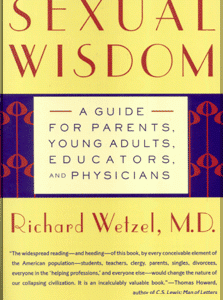
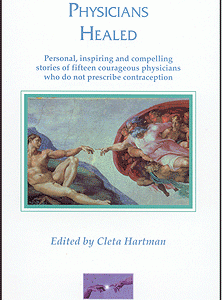

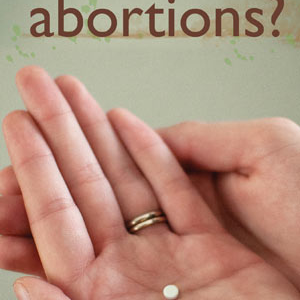

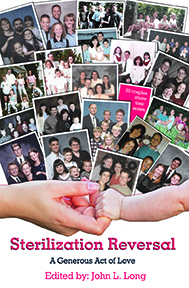

Silent Action of the Heart
By Cardinal Robert Sarah, Prefect of the Congregation for Divine Worship and the Discipline of the Sacraments, June 15, 2015
Fifty years after its promulgation by Pope Paul VI, will the Second Vatican Council’s Constitution on the Sacred Liturgy finally be read? Sacrosanctum Concilium is actually not just a catalogue of “recipes” for reform, but a veritable Magna Carta of all liturgical action.
In it the Ecumenical Council gives us a magisterial lesson in methodology. Indeed, far from being content with a disciplinary, external approach to the liturgy, the Council wishes to have us contemplate what it is in its essence. The Church’s practice always results from what she receives and contemplates in revelation. Pastoral ministry cannot be detached from doctrine.
In the Church “action is directed to contemplation” (cf. no. 2). The conciliar Constitution invites us to rediscover the Trinitarian origin of the liturgical work. Indeed, the Council determines that there is a continuity between the mission of Christ the Redeemer and the liturgical mission of the Church. “Just as Christ was sent by the Father, so also He sent the apostles,” so that “by means of sacrifice and sacraments, around which the entire liturgical life revolves” they might “accomplish the work of salvation” (no. 6).
Carrying out the liturgy therefore is the same as accomplishing the work of Christ. The liturgy is essentially “actio Christi”: “the work of Christ the Lord in redeeming mankind and giving perfect glory to God” (no. 5). He is the great high priest, the true subject, the true protagonist of the liturgy (cf. no. 7). If this vitally important principle is not accepted in faith, we run the risk of making the liturgy a human work, the community’s celebration of itself.
On the contrary, the Church’s real work is to enter into Christ’s action, to join in the work for which He has been commissioned by the Father. Therefore “the fullness of divine worship was given to us,” because “His humanity, united with the person of the Word, was the instrument of our salvation” (no. 5). The Church, the Body of Christ, must therefore become in turn an instrument in the hands of the Word.
This is the ultimate meaning of the key concept of the conciliar Constitution: “participatio actuosa”. For the Church, this participation consists of becoming the instrument of Christ the Priest, for the purpose of participating in His Trinitarian mission. The Church actively participates in Christ’s liturgical work insofar as she is the instrument thereof. In this sense, language about the “celebrating community” has its ambiguities and requires true caution (cf. the Instruction Redemptoris sacramentum, no. 42). Therefore this “participatio actuosa” should not be understood as the need to do something. On this point the Council’s teaching has often been distorted. Instead it is a matter of letting Christ take us and associate us with His sacrifice.
Liturgical “participatio” must therefore be understood as a grace from Christ who “always associates the Church with Himself” (Sacrosanctum Concilium, 7). He is the one who has the initiative and the primacy. The Church “calls to her Lord, and through Him offers worship to the Eternal Father” (no. 7).
The priest must therefore become this instrument that allows Christ to shine through. As our Holy Father Pope Francis recalled recently, the celebrant is not the host of a show, he must not look for sympathy from the assembly by setting himself in front of it as its main speaker. To enter into the spirit of the Council means, on the contrary, to be self-effacing, to refuse to be the center of attention.
Contrary to what has sometimes been maintained, and quite in keeping with the conciliar Constitution, it is altogether appropriate, during the penitential rite, the singing of the Gloria, the orations and the Eucharistic prayer, that everyone, priest and faithful, turn together toward the East, so as to express their intention to participate in the work of worship and redemption accomplished by Christ. This way of celebrating could possibly be implemented in cathedrals, where the liturgical life must be exemplary (cf. no. 41).
Of course, there are other parts of the Mass in which the priest, acting “in persona Christi Capitis” [“in the person of Christ the Head”] enters into a nuptial dialogue with the assembly. But the only purpose of this face-to-face is to lead to a tête-À-tête with God which, through the grace of the Holy Spirit, will become a heart-to-heart conversation. The Council thus proposes other means of promoting participation: “acclamations, responses, psalmody, antiphons, and songs, as well as by actions, gestures, and bodily attitudes” (no. 30).
An over-hasty and all-too-human interpretation has led some to conclude that it was necessary to make sure that the faithful were constantly busy. The contemporary Western mentality, shaped by technology and fascinated by the media, tried to make the liturgy a work of effective, rewarding instruction. In this spirit, many have tried to make liturgical celebrations convivial. Liturgical ministers, prompted by pastoral motives, sometimes try to instruct by introducing profane, show-business elements into liturgical celebrations. Don’t we sometimes see a proliferation of testimonies, scenery and applause? They think that this will foster the participation of the faithful, whereas in fact it reduces the liturgy to a human game.
“Silence is not a virtue, noise is not a sin, it is true,” says Thomas Merton, “but the turmoil and confusion and constant noise of modern society,” or of some African Eucharistic liturgies, “are the expression of the ambiance of its greatest sins—its godlessness, its despair. A world of propaganda, of endless argument, vituperation, criticism, or simply of chatter, is a world without anything to live for…. Mass becomes racket and confusion; prayers—an exterior or interior noise” (Thomas Merton The Sign of Jonas [San Diego: Harcourt, Inc., 1953, 1981], passim).
We run the real risk of leaving no room for God in our celebrations. We fall into the temptation of the Hebrews in the desert. They sought to create for themselves a form of worship on their own scale and of their own stature, and let us not forget that they ended up prostrate before an idol, the golden calf.
It is time to start listening to the Council. The liturgy is “above all things the worship of the divine majesty” (no. 33). It has instructional value to the extent to which it is completely ordered to the glorification of God and to divine worship. Liturgy really places us in the presence of divine transcendence. True participation means renewing in ourselves that “amazement” that Saint John Paul II held in high regard (cf. Ecclesia de Eucharistia, no. 6). This sacred wonder, this joyful fear, requires our silence before the divine majesty. We often forget that sacred silence is one of the means noted by the Council for promoting participation.
If the liturgy is Christ’s work, is it necessary for the celebrant to interject his own comments? We should remember that, when the missal authorizes an intervention, this must not become a profane, human speech, a more or less subtle commentary on current events, or a worldly greeting to the persons present, but rather a very brief exhortation to enter into the mystery (cf. General Introduction of the Roman Missal, no. 50). As for the homily, in itself it is always a liturgical act that has its own rules. “Participatio actuosa” in Christ’s work presupposes that we leave the profane world so as to enter into the “sacred action surpassing all others” (Sacrosanctum Concilium, 7). In fact, “we claim somewhat arrogantly to remain in the human sphere so as to enter into the divine” (Robert Sarah, God or Nothing [San Francisco: Ignatius Press, 2015], chapter IV).
In this regard it is deplorable that the sanctuary in our churches is not a place strictly reserved for divine worship, that people enter it in worldly garb, and that the sacred space is not clearly delimited by the architecture. Since, as the Council teaches, Christ is present in His word when it is proclaimed, it is likewise harmful that lectors do not have proper attire that shows that they are not pronouncing human words but a divine word.
The liturgy is a fundamentally mystical, contemplative reality, and consequently beyond the reach of our human action; even our “participatio” is a grace from God. Therefore it presupposes on our part openness to the mystery being celebrated. Thus, the Constitution recommends the full understanding of the rites (cf. no. 34), and at the same time prescribes that “the faithful… be able to say or to sing together in Latin those parts of the Ordinary of the Mass which pertain to them” (no. 54).
Indeed, understanding the rite is not the work of unaided human reason, which would have to grasp everything, understand everything, master everything. The understanding of the sacred rites is that of the “sensus fidei”, which practices a living faith through the symbol and knows by being attuned more than through concepts. This understanding presupposes that one approaches the mystery with humility.
But will people have the courage to follow the Council this far? Such an interpretation, illuminated by the faith, is fundamental however for evangelization. Indeed, “the liturgy… shows forth the Church to those who are outside as a sign lifted up among the nations, under which the scattered children of God may be gathered together” (no. 2). It must stop being a place of disobedience to the Church’s prescriptions.
More specifically, it cannot be an occasion for divisions among Christians. Dialectical interpretations of Sacrosanctum Concilium, the hermeneutics of rupture in one direction or the other, are not the fruit of a spirit of faith. The Council did not intend to break with the liturgical forms inherited from Tradition, but rather intended to appreciate them in greater depth. The Constitution declares that “any new forms adopted should in some way grow organically from forms already existing” (no. 23).
In this regard, it is necessary that some should celebrate according to the “usus antiquior” [older usage] and should do so without any spirit of opposition, and therefore in the spirit of Sacrosanctum Concilium. Similarly, it would be a mistake to consider the Extraordinary Form of the Roman Rite as coming from some other theology which is not that of the reformed liturgy. It would also be desirable in a future edition of the Missal to insert the penitential rite and the offertory of the “usus antiquior” for the purpose of emphasizing that the two liturgical forms illuminate each other, in continuity and without opposition.
If we live in this spirit, then the liturgy will stop being a place of rivalries and critiques, so as finally to make us participate actively in that liturgy “which is celebrated in the holy city of Jerusalem toward which we journey as pilgrims, where Christ is sitting at the right hand of God, a minister of the holies and of the true tabernacle” (no. 8).
Posted in News & Commentary | No Comments »